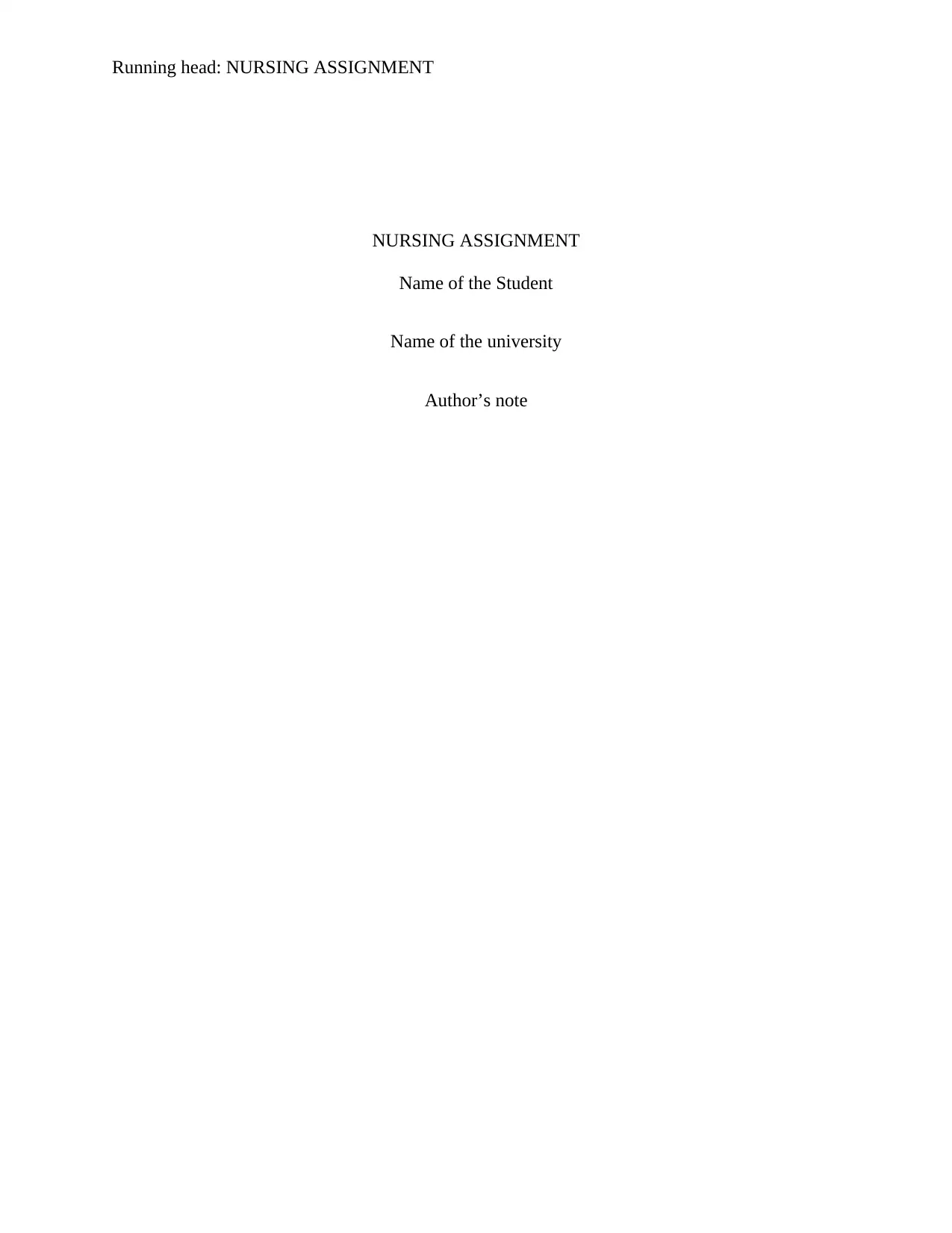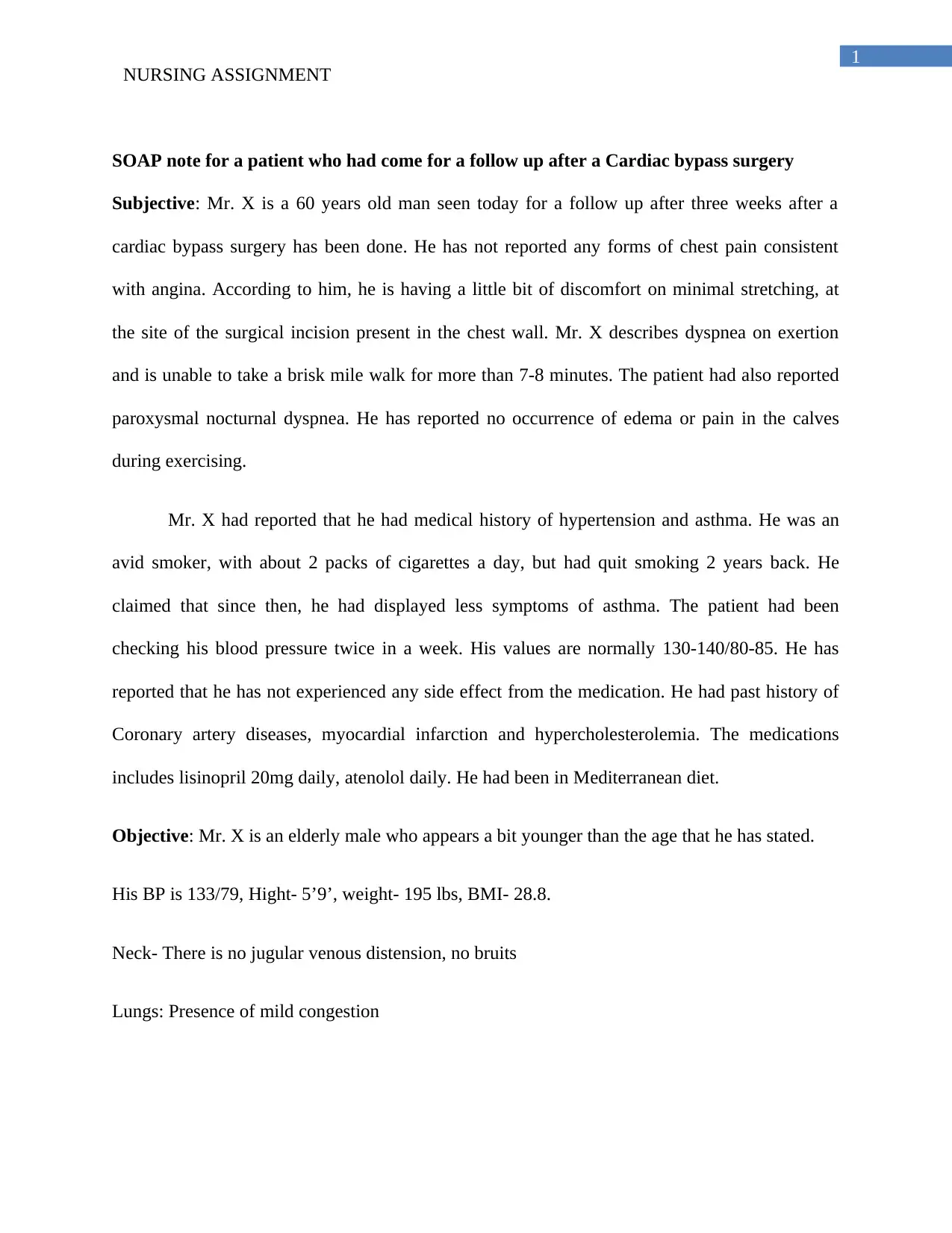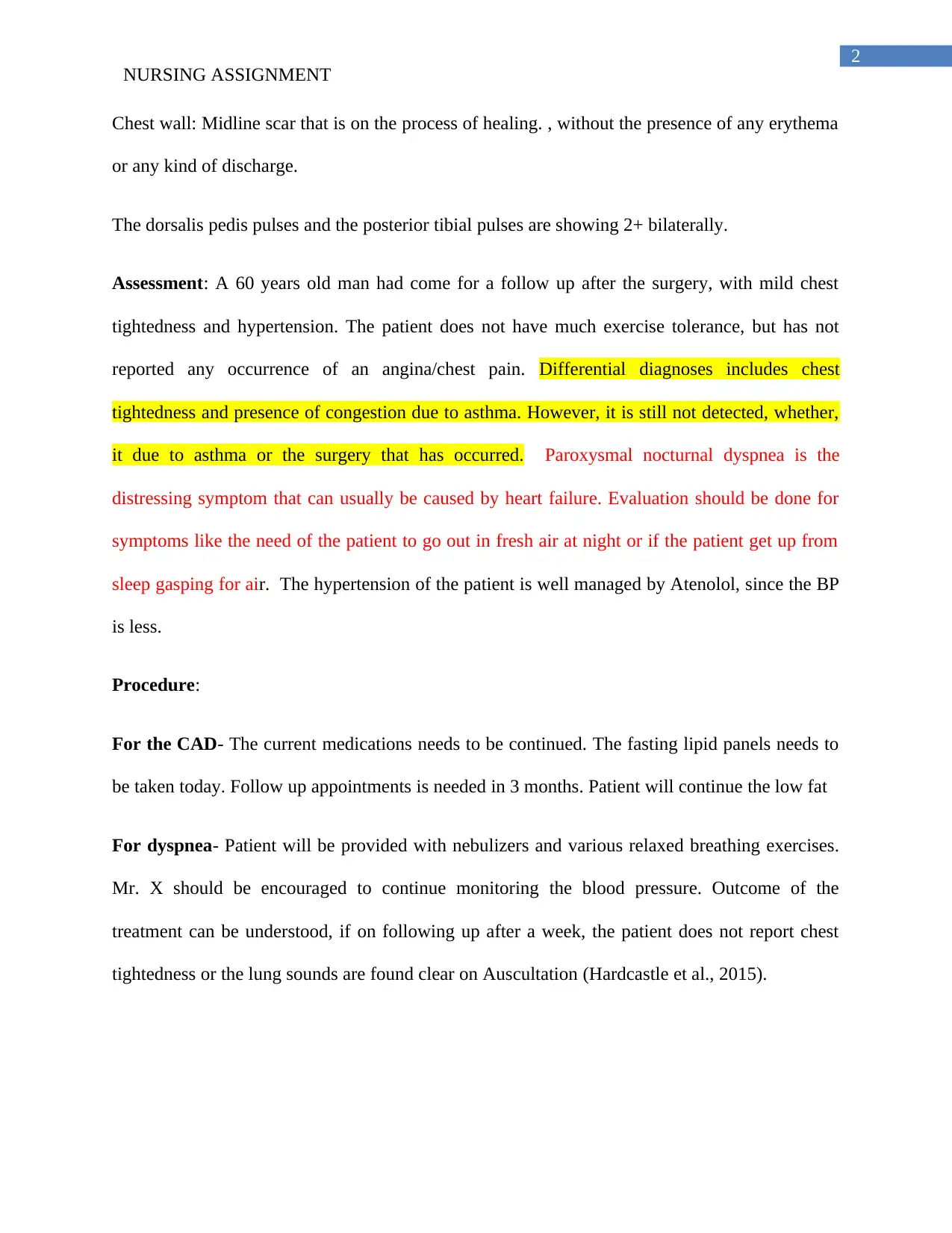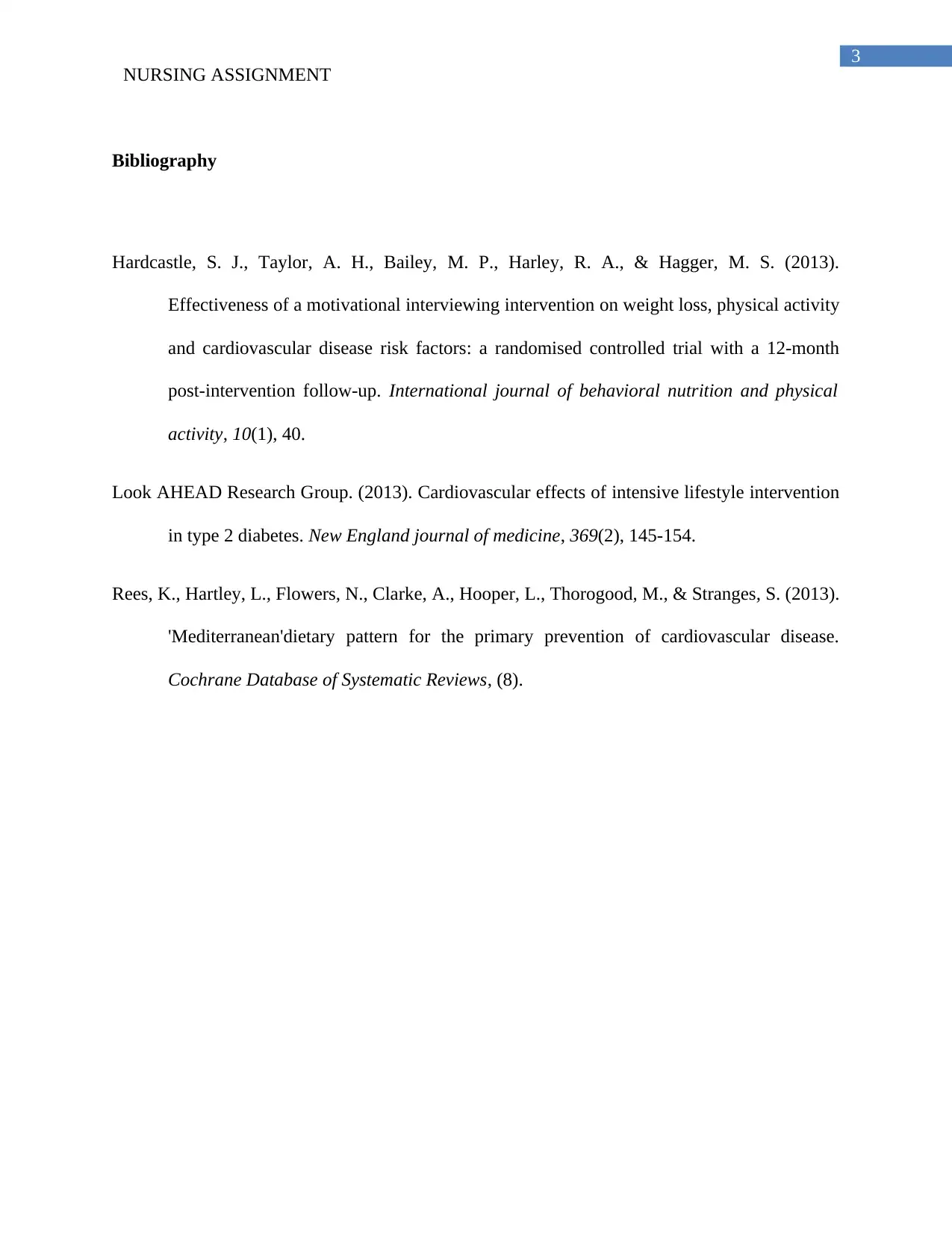SOAP Note Report: Post-Cardiac Bypass Surgery Follow-up Assessment
VerifiedAdded on 2022/10/04
|4
|774
|13
Report
AI Summary
This nursing assignment presents a SOAP note for a 60-year-old male patient's follow-up three weeks after cardiac bypass surgery. The subjective section details the patient's complaints of chest discomfort, dyspnea on exertion, and paroxysmal nocturnal dyspnea, along with a history of hypertension, asthma, and smoking. The objective section includes the patient's vital signs, physical assessment findings, and medication details. The assessment identifies potential differential diagnoses, including chest tightness and congestion related to asthma or surgery, and highlights the significance of paroxysmal nocturnal dyspnea. The plan outlines the continuation of current medications, lipid panel testing, follow-up appointments, and management of dyspnea through nebulizers and breathing exercises. The report emphasizes the importance of monitoring blood pressure and evaluating treatment outcomes. The assignment concludes with references to relevant research articles.
1 out of 4










![[object Object]](/_next/static/media/star-bottom.7253800d.svg)